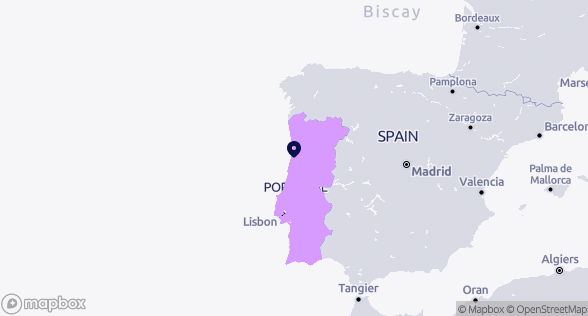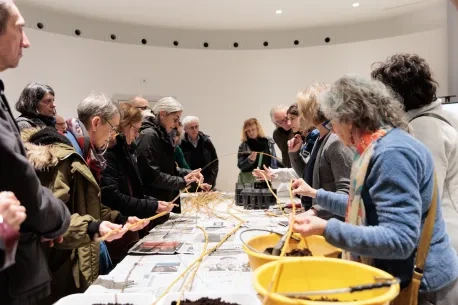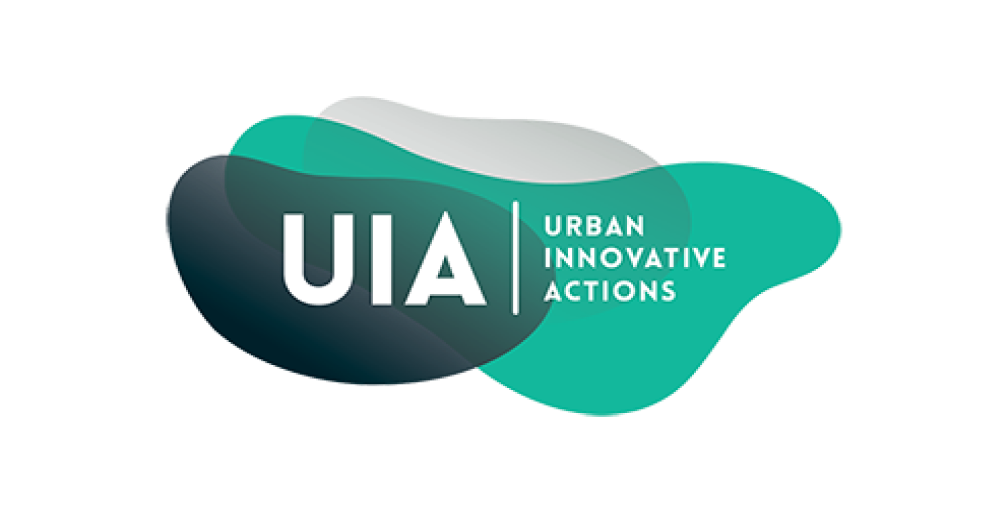
Aveiro
Portugal
About Aveiro Steam City

‘Aveiro STEAM City: Urban Network for Upgrading STEAM Skills and Increasing Jobs Added-Value through Digital Transformation in a new economic context’ aims to address labour market-related challenges in the Portuguese city of Aveiro through technological infrastructure investments and strengthening of citizens’ digital competencies. The project started in November 2018 and, at the time of writing, is in its second year of implementation, with a planned end in October 2021. Consequently, the following description is limited in scope.
The project stemmed from labour market transformations. Between 2013 and 2018 unemployment rates in Portugal decreased from 18% to 8%. Among the drivers of change were migration to other EU countries, as well as to the strong economic centres of Lisbon and Porto. This phenomenon of ‘brain drain’ had a significant impact on medium-sized cities like Aveiro, where jobs were offered, but recruitment was not necessarily successful, indicating a mismatch between the supply and demand sides of the local labour market.
In response, the goal of Aveiro STEAM City was to improve Aveiro’s capacity to attract and retain employees in order to stimulate growth of the local economy and produce more added-value. The project engaged six partners in cooperation and consisted of two main components:
- Building and strengthening the city’s educational offering to produce a new range of talents through actions related to education, as well as rethinking of the education and qualification system. A ‘STEAM’ approach was adopted to this end, in which the common acronym of ‘STEM’ domains (science, technology, engineering and maths) was elaborated with an ‘A’ to represent the arts, creative and human sciences areas.
- Technological investments as support for the practical application of ‘STEAM’ competencies and a basis for economic growth. These included 5G infrastructure, Internet of Things platforms, as well as encouraging the digital transformation of public and private sectors to develop new products and services. As a result, an innovative business model integrating public bodies, academia, the research and development centre and companies was planned.

‘Aveiro STEAM City: Urban Network for Upgrading STEAM Skills and Increasing Jobs Added-Value through Digital Transformation in a new economic context’ aims to address labour market-related challenges in the Portuguese city of Aveiro through technological infrastructure investments and strengthening of citizens’ digital competencies. The project started in November 2018 and, at the time of writing, is in its second year of implementation, with a planned end in October 2021. Consequently, the following description is limited in scope.
The project stemmed from labour market transformations. Between 2013 and 2018 unemployment rates in Portugal decreased from 18% to 8%. Among the drivers of change were migration to other EU countries, as well as to the strong economic centres of Lisbon and Porto. This phenomenon of ‘brain drain’ had a significant impact on medium-sized cities like Aveiro, where jobs were offered, but recruitment was not necessarily successful, indicating a mismatch between the supply and demand sides of the local labour market.
In response, the goal of Aveiro STEAM City was to improve Aveiro’s capacity to attract and retain employees in order to stimulate growth of the local economy and produce more added-value. The project engaged six partners in cooperation and consisted of two main components:
- Building and strengthening the city’s educational offering to produce a new range of talents through actions related to education, as well as rethinking of the education and qualification system. A ‘STEAM’ approach was adopted to this end, in which the common acronym of ‘STEM’ domains (science, technology, engineering and maths) was elaborated with an ‘A’ to represent the arts, creative and human sciences areas.
- Technological investments as support for the practical application of ‘STEAM’ competencies and a basis for economic growth. These included 5G infrastructure, Internet of Things platforms, as well as encouraging the digital transformation of public and private sectors to develop new products and services. As a result, an innovative business model integrating public bodies, academia, the research and development centre and companies was planned.
This is a case study as part of an UIA report. You can access all of the project's resources on its project collection page.
Internet of Things
Text
According to the European Commission’s 2016 Staff Working Document on Advancing the Internet of Things in Europe, “the IoT represents the next step towards digitisation where all objects and people can be interconnected through communication networks, in and across private, public and industrial spaces, and report about their status and/or about the status of the surrounding environment.”
To read more on the EU and the Internet of Things, visit the website of the European Commission
According to the European Commission’s 2016 Staff Working Document on Advancing the Internet of Things in Europe, “the IoT represents the next step towards digitisation where all objects and people can be interconnected through communication networks, in and across private, public and industrial spaces, and report about their status and/or about the status of the surrounding environment.”
To read more on the EU and the Internet of Things, visit the website of the European Commission
Evaluation governance
The partner responsible for monitoring and evaluation was CEDES – the Association for a Centre of Studies in Sustainable Development. It is an organisation with experience in various activities related to urban challenges, sustainability, technological development, research, education and innovation. In terms of project management, monitoring and evaluation was structured as a separate component, along with the design and testing of a business model.
Since CEDES was a project partner and not an external evaluating institution, it participated in all activities and communications, having ample opportunity to observe and understand project progress. All project partners cooperated in monitoring and evaluation through joint and one-on-one meetings, which also provided the opportunity for regular feedback and learning loops.
It is crucial to have all the insights of the partners. They are the ones that ultimately know what they want to achieve. They are the ones that know the constraints and limitations of their activities, the implementation of their activities, so we need their opinion, their insights.
Source: STEAM City project hearing
Evaluation process
Monitoring and evaluation in Aveiro STEAM City was achieved through a participatory approach, which aimed to engage project partners, stakeholders and target groups. The approach could also be considered to be based on a theory of change, since significant attention was given to defining a set of indicators and outcomes linked to activities conducted in the project. Nevertheless, this was not explicitly expressed.
In fact, defining this set of indicators proved to be somewhat challenging due to the relative complexity of the project. The team aimed to design a simple monitoring and evaluation model that not only integrated the impact of the main project components, but also aggregated data and paired feedback from various sources into the same indicators. This way, as one indicator would represent information from various activities and target groups, the project’s broader impact could be grasped.
The resulting set consisted of several types of indicators:
- Impact indicators – measured through national statistics data.
- Result indicators – captured primarily through surveys and focus groups with users and stakeholders.
- Output indicators – measured through project monitoring data and accounting for what is created or conducted during implementation.
Importantly, the indicators developed were treated in a dynamic and flexible way, with partners ready to change them should such a need arise based on insights from project implementation.
It is an ongoing [key performance indicator] model. For us it’s very clear that if we have major breakthroughs, or if we have some constraints or limitations, if we find something else, we will change it.
Source: STEAM City project hearing
As the project evaluation team stressed while developing the indicator set, it is necessary to cooperate with partners who implement the activities. This may be tricky, as partners focus on implementing the activities they are responsible for, but it is the only way to develop a useful and relevant indicator framework.
Of course the project partners are focused on the implementation of their activities […] And we are focused on the impact and monitoring all these activities. So, sometimes it is difficult – but it’s normal – to have some time and to discuss some things.
Source: STEAM City project hearing
Participatory approach
Text
Participatory evaluation is an approach that involves the stakeholders of a programme or policy in the evaluation process. This involvement can occur at any stage of the evaluation process, from the evaluation design to the data collection and analysis and the reporting of the study.
Source: Better evaluation
“Participatory research is giving power from the researcher to research participants. The research participants and researchers together control the research agenda, process and actions.”
Source: Dawance, T., Smetcoren, A., Ryckewaert, M., Aernouts, N., De Donder, L., Care and Living in Community, CALICO. Groundwork for evaluation and state-of-play, 2019.
Participatory evaluation is an approach that involves the stakeholders of a programme or policy in the evaluation process. This involvement can occur at any stage of the evaluation process, from the evaluation design to the data collection and analysis and the reporting of the study.
Source: Better evaluation
“Participatory research is giving power from the researcher to research participants. The research participants and researchers together control the research agenda, process and actions.”
Source: Dawance, T., Smetcoren, A., Ryckewaert, M., Aernouts, N., De Donder, L., Care and Living in Community, CALICO. Groundwork for evaluation and state-of-play, 2019.
Theory of change
Text
“A ‘theory of change’ explains how activities are understood to produce a series of results that contribute to achieving the final intended impacts. ” A ‘theory of change’ should, therefore, present the link or path between what one is doing and what one is trying to achieve.
Source: Rogers, P., Theory of Change: Methodological Briefs - Impact Evaluation No. 2, Methodological Briefs no. 2, 2014.
“A ‘theory of change’ explains how activities are understood to produce a series of results that contribute to achieving the final intended impacts. ” A ‘theory of change’ should, therefore, present the link or path between what one is doing and what one is trying to achieve.
Source: Rogers, P., Theory of Change: Methodological Briefs - Impact Evaluation No. 2, Methodological Briefs no. 2, 2014.
At the time of the case study, Aveiro STEAM City was being implemented, as noted above. Because of this, information on data collection was limited. The project team planned to use a mixed methods approach, including both quantitative and qualitative research methods. Combining methods can improve the validity of results and balance out the weaknesses and advantages of single methods. Since Aveiro STEAM City is largely based around deploying and using ICT tools, it also aimed to employ them in data collection.
At a general level, the project presents commendable openness to modifications in its approach, should challenges to data collection occur. Furthermore, although data collection methods are primarily quantitative, the project team foresees the need to conduct qualitative interviews and focus groups with users and stakeholders at the end of implementation to understand the process and its effects. This is crucial for learning and continuing activities after UIA funding ends (designing improved projects, for example).
Mixed-methods approach
Text
Mixed-methods approach can be defined as “research in which the investigator collects and analyzes data, integrates the findings, and draws inferences using both qualitative and quantitative approaches or methods in a single study or a program of inquiry”.
Source: Tashakkori, A., Creswell, J.W., “Editorial: the new era of mixed methods”, J Mixed Methods Res 1: 3–7, 2007.
Mixed-methods approach can be defined as “research in which the investigator collects and analyzes data, integrates the findings, and draws inferences using both qualitative and quantitative approaches or methods in a single study or a program of inquiry”.
Source: Tashakkori, A., Creswell, J.W., “Editorial: the new era of mixed methods”, J Mixed Methods Res 1: 3–7, 2007.
Horizontal issues
At the time of the case study, Aveiro STEAM City was in implementation, as noted above. Because of this, information on horizontal issues was limited.
At the time of the case study, Aveiro STEAM City was in implementation, as noted above. Because of this, information on horizontal issues was limited.
Lessons learnt
Several lessons can be drawn from Aveiro STEAM City monitoring and evaluation approach:
- The monitoring and evaluation process needs to be easy, affordable to implement and effective, both for research participants and the project team.
- All project partners should be involved in designing and conducting monitoring and evaluation because they have the best knowledge on the limitations, constraints and potential impacts of activities. Such knowledge is more difficult to access if monitoring and evaluation are conducted from an external perspective.
- Research methods and tools used need to consider the type of target group that is being asked for feedback – different questions need to be directed at different groups (e.g. primary school students and active professionals).
About this resource
The Urban Innovative Actions (UIA) is a European Union initiative that provided funding to urban areas across Europe to test new and unproven solutions to urban challenges. The initiative had a total ERDF budget of €372 million for 2014-2020.
Similar content






Want to replicate this urban practice in your city?
Apply to an EUI City-to-City Exchange
Connect with a peer city who can bring you solutions and expertise and apply together to receive EUI support
More infos on EUI websiteBrowse existing Innovative Actions looking for Transfer Partners and cities willing to do a City-to-City Exchange looking for peers